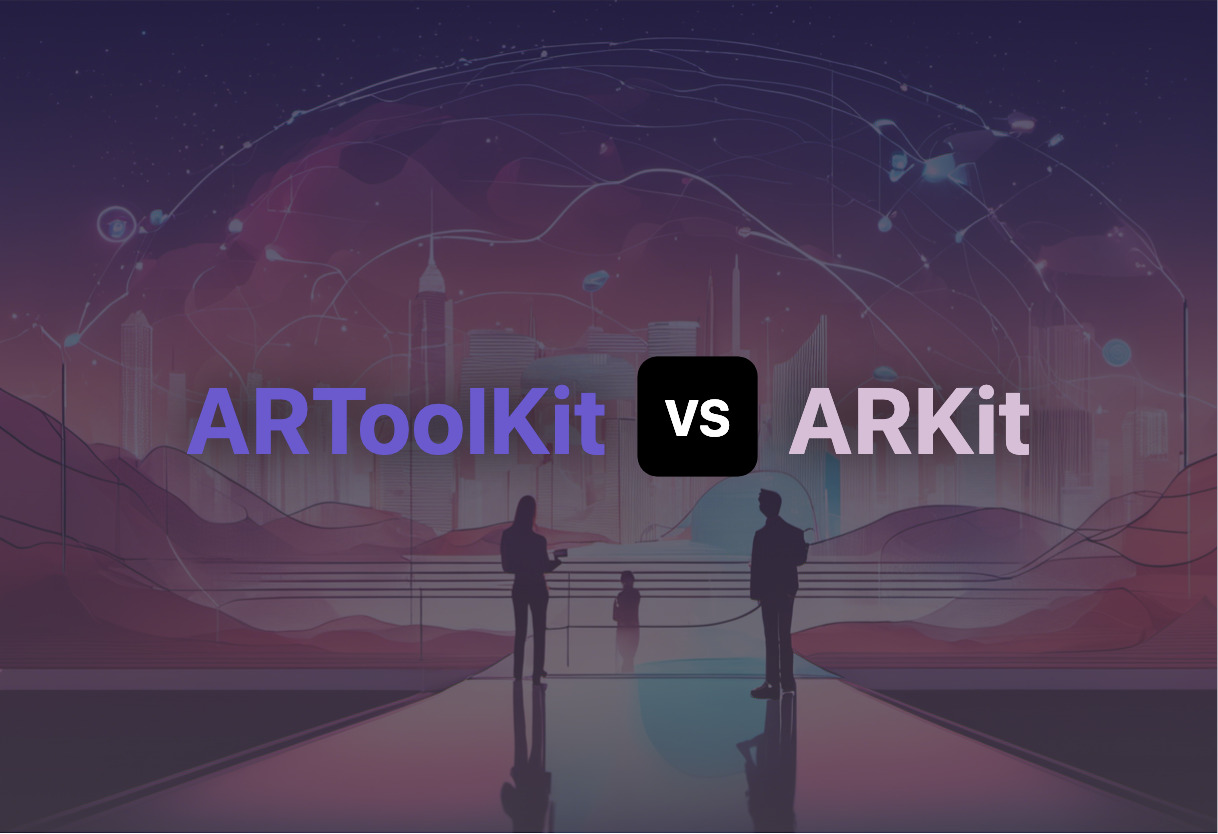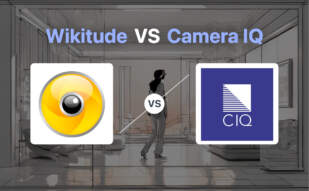For prolific developers seeking flexible platforms, open-source ARToolKit is a suitable choice, with great compatibility and customizability. However, for those primarily developing for iOS who require cutting-edge features, prefer a concise and streamlined workflow, the updated ARKit decidedly wins the game.

Key Differences Between ARToolKit and ARKit
- Coding: ARToolKit is open-source, allowing for customization while ARKit provides sophisticated built-in features.
- Compatibility: ARToolKit is compatible with multiple operating systems. ARKit caters solely to iOS.
- Features: ARKit has advanced capabilities like 4K video capture, HDR video support, simultaneous front and back camera use. ARToolKit focuses on essential AR development eliminating complexities.
- Use Cases: ARToolKit finds use across diverse fields from education to spatial relations, ARKit is primarily utilized in gaming, shopping, film production.
| Comparison | ARToolKit | ARKit |
|---|---|---|
| Initial Release | 1999 | 2017 |
| Developers | Hirokazu Kato, Mark Billinghurst, Ivan Poupyrev | Apple Inc. |
| Platforms Supported | Windows, OS X, Linux, iOS, Android | iOS |
| Tracking Features | Single-camera, stereo-camera tracking | Visual Inertial Odometry technology |
| SDK Availability | Mobile AR SDK available | AR framework bundled with iOS SDK since iOS 11 |
| AR Object Interaction | User interactivity with virtual objects overlaid on real camera feed | AR allows apps to introduce virtual objects to the users real-world environment |
| 3D Support | Includes features for camera calibration, tracking and calibration | Supports up to 100 images, improves physical object recognition in 3D |
| Developmental Use | Education, geometry, spatial relations, molecule structures | Video editing, film production, games, shopping, social media applications |
| Hardware Requirements | Minimum hardware requirements include 500 MHz processor and a graphics accelerator card | Depends on specific iOS devices, uses camera, processors, and motion sensors |
| Open Source | Yes, under GNU General Public License for non-commercial uses | No |
What Is ARToolKit and Who’s It For?
Founded by Hirokazu Kato, Mark Billinghurst, and Ivan Poupyrev in 1999, ARToolKit started as a groundbreaking initiative in the AR space held initially by University of Washington HIT Lab. ARToolKit revolutionized the AR realm by introducing real-time, interactive virtual objects overlaid onto real camera feed. Its potential applications span across a diverse range including education, geometry, spatial relations, and molecule structures. For anyone interested in developing AR with minimal hardware requirements, and needing assistance in handling complicated aspects like tracking, registration, and calibration, ARToolKit is your go-to toolkit.

Pros of ARToolKit
- Supports multiple platforms including Windows, OS X, Linux, iOS, and Android
- Offers utility for camera calibration, marker generation, and tracking
- Support for heads-up displays
- Promotes user interactivity within the AR environment
- Low minimum hardware requirements
Cons of ARToolKit
- Limited to tracking planar images and simple black squares
- The toolkit’s optimization for mobile could be improved
- Primarily suited for non-commercial use under the GNU General Public License
What Is ARKit and Who’s It For?
ARKit is Apple’s flagship AR platform, launched in 2017 as part of iOS 11. With each iOS update, ARKit expands its features, making AR more accessible for app developers. Capabilities innovated by ARKit include: high-resolution image capture, motion capture, people occlusion, object recognition, and advanced rendering with each annual refresh. Ideal for iOS developers aiming to create engaging AR-based applications with a focus on gaming, shopping, or industrial applications, ARKit is in a league of its own.

Pros of ARKit
- Supports a wide range of capabilities such as high-resolution image capture, motion capture, people occlusion, and more
- Allows simultaneous use of front and back cameras
- ARKit updates with every iOS update, leading to a continual feature growth
- Effective in providing AR navigation using GPS and Bluetooth beacons for indoor navigation
Cons of ARKit
- Restricted to iOS devices
- Dependent on good lighting and flat surfaces for visual odometry
- Requires input from multiple sensors preventing simple device usage
ARToolKit vs ARKit: Pricing
The first technology, ARToolKit, brings an open-source platform that scales robust AR experiences without any explicit pricing, while ARKit, an Apple product, aligns its pricing with iOS devices and updates as it’s a built-in feature.
ARToolKit
ARToolKit, a brainchild originated in the echelons of the University of Washington HIT Lab and later held by DAQRI, is an open-source software. It’s distributed under the GNU General Public License for non-commercial usage. Subsequently, the cost to use ARToolKit is fundamentally zero unless utilized in a commercial setting where the specifics of the commercial license would delineate the cost element.
ARKit
ARKit is Apple’s proprietary AR platform bundled with iOS SDK since the iOS 11 release. Essentially, the cost of ARKit is tethered to the iOS devices it’s compatible with. There isn’t any separate pricing for ARKit as it gets updates along with each iOS update. Thus, buying an iOS device, especially a Pro model, is an investment in ARKit’s capabilities and future updates.
ARToolKit or ARKit: Picking Your AR Powerhouse
As creators seek the ideal AR development toolkit, the dilemma often pivots on ARToolKit and ARKit. But who truly emerges victorious?
Indie Game Developers
For indie developers with tight budgets and firm requirements of platform flexibility, ARToolKit shines, thanks to its open-source nature, and support for multiple systems including Windows, OS X, Linux, iOS, and Android. The capability to track planar images and simple black squares, with user interactivity for virtual objects overlaid on real camera feed makes ARToolKit a prime choice.

AR Educators
For AR educators exploring inventive means to illustrate complex concepts, ARToolKit, with its emphasis on interactivity and its use in fields like geometry and spatial relations, hands down dominates ARKit. It’s low hardware requirements and extensive features for camera calibration, tracking and calibration further seal the deal.

Social Media AR Creators
If your arena is social media or film production, compelling advances offered by ARKit 6 like 4K video capture for AR experiences, HDR video, high-resolution image capture during AR session, and simultaneous use of front and back cameras transforms your AR creations into instant crowd pullers.

AR-focused iOS App Developers
iOS-centric developers designing AR-rich apps can’t help but leverage ARKit’s robust Visual Inertial Odometry technology and capabilities like People Occlusion, Motion Capture and Scene Geometry. Moreover, ARKit remains unparalleled for developing gaming apps, powered by the latest iPhone X and iPad Pro models.

Considering ARToolKit’s platform versatility and interactive focus, it’s unsurpassed for indie developers and educators. Conversely, ARKit’s impressive motion capture and high-quality video traits endow it to be the trophy to iOS developers and social media creators.
Tiffany Brise
Content writer @ Aircada, patiently awaiting a consumer AR headset that doesn’t suck.





